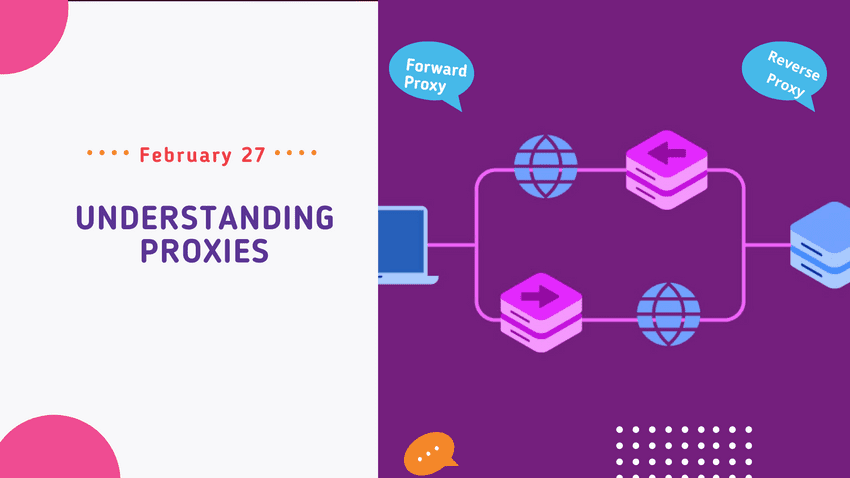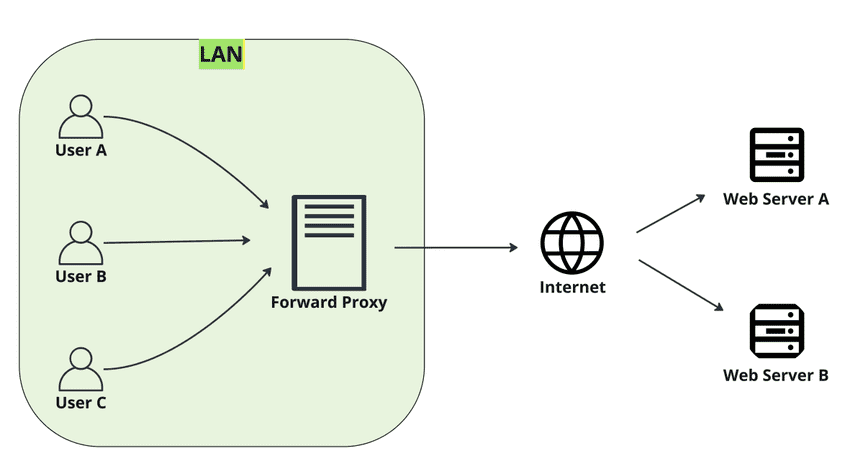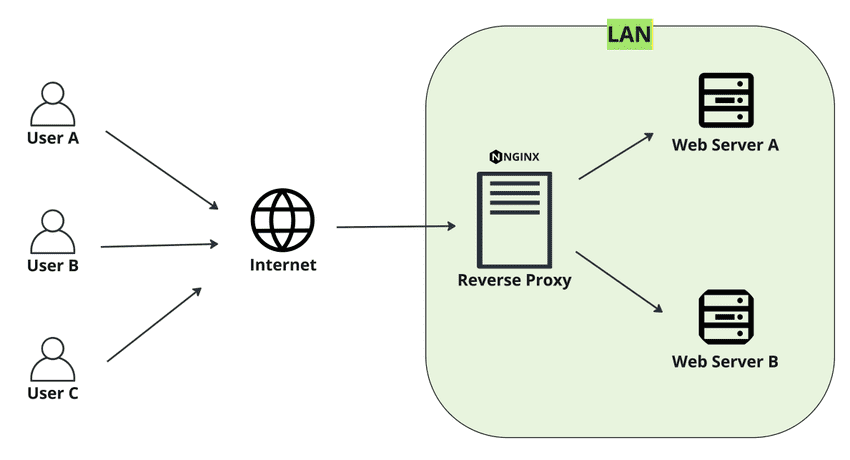Introduction
Proxy servers are a popular tool for managing and securing network traffic. A proxy server acts as an intermediary between clients and servers on a network. It can intercept and modify requests and responses, adding an extra layer of control and security to network traffic. There are two primary types of proxy servers: forward and reverse proxies. In this article, we’ll take a detailed look at both of these types of proxies.
What is a Forward Proxy?
A forward proxy, also known as an outgoing proxy, is a server that sits between a client and the internet. When a client requests access to a resource on the internet, the request is first sent to the forward proxy server. The proxy server then forwards the request to the internet on behalf of the client, and returns the response to the client.
A forward proxy is typically used to provide anonymity to clients by hiding their IP address. The proxy server acts as an intermediary, so the destination server only sees the IP address of the proxy server, not the client’s IP address. This can be useful for clients who want to access resources on the internet without revealing their location or identity.
Forward proxies can also be used to enforce content filtering policies. For example, a company may use a forward proxy to prevent employees from accessing certain websites during work hours. The proxy server can be configured to block requests to specific websites or categories of websites, such as social media or gambling sites.
What is a Reverse Proxy?
A reverse proxy, also known as an incoming proxy, is a server that sits between the internet and a server. When a client requests access to a resource on a server, the request is first sent to the reverse proxy server. The proxy server then forwards the request to the server on behalf of the client, and returns the response to the client.
A reverse proxy is typically used to improve performance, scalability, and security of a server by caching content, load balancing traffic, and providing a single point of entry for incoming requests. By caching frequently accessed content, a reverse proxy can reduce the load on the server and improve response times for clients. By load balancing traffic across multiple servers, a reverse proxy can prevent overloading and ensure that all clients receive a fast and responsive service. By providing a single point of entry for incoming requests, a reverse proxy can improve security by reducing the number of entry points into the server.
Why is Nginx called a “reverse” proxy?
Nginx is often referred to as a "reverse" proxy because it operates in the opposite direction of a traditional forward proxy. A forward proxy is a server that sits between a client and the internet, forwarding requests from the client to the destination server. On the other hand, a reverse proxy is a server that sits between the internet and a server, forwarding requests from the internet to the server.
Nginx is a web server and load balancer that can act as a reverse proxy. When acting as a reverse proxy, Nginx receives incoming requests from the internet on behalf of a server and forwards those requests to the server. Nginx can also be configured to load balance incoming requests across multiple servers to improve performance and scalability.
Benefits of Forward and Reverse Proxies
Forward and reverse proxies provide a number of benefits for network management and security:
- Anonymity: Forward proxies can be used to provide anonymity to clients by hiding their IP address from the destination server.
- Content filtering: Forward proxies can be used to enforce content filtering policies, blocking requests to specific websites or categories of websites.
- Performance: Reverse proxies can improve performance by caching frequently accessed content and load balancing traffic across multiple servers.
- Scalability: Reverse proxies can improve scalability by distributing traffic across multiple servers, preventing overloading and ensuring that all clients receive a fast and responsive service.
- Security: Reverse proxies can improve security by providing a single point of entry for incoming requests and reducing the number of entry points into the server.
- Flexibility: Proxies can be configured and customized to meet the specific needs of a network, allowing administrators to control and manage traffic in a way that is tailored to their requirements.
Forward Proxy vs Reverse Proxy
| Forward Proxy | Reverse Proxy |
|---|---|
| Avoid browsing restrictions | Load Balancing |
| Improve security by reducing the number of entry points into a network | Protects from DDos attacks |
| Protects user identity online | Cache static contents |
| Blocks access to certain contents | Encrypts and Decrypts SSL communications |
Conclusion
Forward and reverse proxies are powerful tools for managing and securing network traffic. They provide a number of benefits, including anonymity, content filtering, performance, scalability, security, and flexibility. By using proxies, administrators can gain greater control over their network traffic, improving performance, security, and overall network management. Whether you need to provide anonymous access to the internet, enforce content filtering policies, or improve server performance and scalability, proxies are a valuable tool for achieving your goals.
You may also like my other articles:
- Why is System Design Important?
- Closures in JavaScript: Understanding and Applications
- Architecture and Design Principle for Online Food Delivery System
💌 If you'd like to receive more tutorials in your inbox, you can sign up for the newsletter here.
Please let me know if there's anything else I can add or if there's any way to improve the post. Also, leave a comment if you have any feedback or suggestions.



Discussions